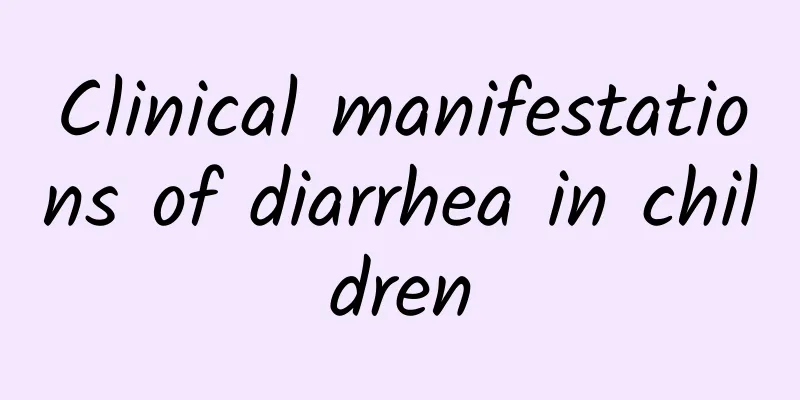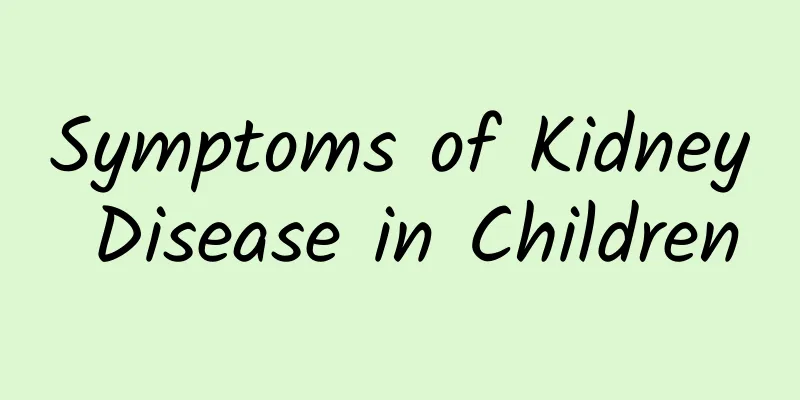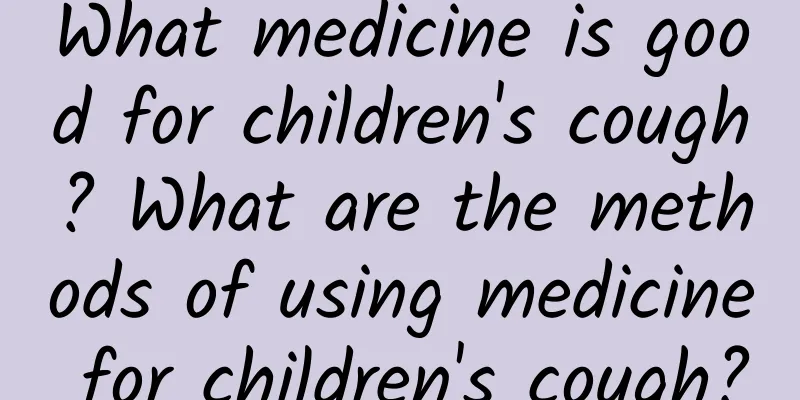Clinical manifestations of diarrhea in children

|
The current weather temperature is getting higher year by year, which leads to the higher incidence of diarrhea year by year. The number of diarrhea patients is also increasing. Even now many children are beginning to suffer from diarrhea, which seriously affects the growth of children. So what are the clinical manifestations of pediatric diarrhea? 1. Digestive tract symptoms During diarrhea, the frequency and volume of bowel movements increase, and the nature of bowel movements changes. Bowel movements may occur more than 3 times a day, or even every 10 to 20 days. The stools may be loose, mushy, watery, or contain mucus, pus, and blood. The nature of the stool is more important than the frequency of bowel movements to determine if diarrhea occurs. If the frequency of bowel movements increases but the stool is formed, it is not diarrhea. Breastfed infants may have 2 to 4 mushy bowel movements a day, which is not diarrhea. Nausea and vomiting are common associated symptoms. In severe cases, patients vomit coffee-like substances. Other symptoms may include abdominal pain, bloating, and loss of appetite. 2. Systemic symptoms Patients with severe illness have obvious systemic symptoms. Most have fever, with body temperature between 38 and 40°C, and a few even above 40°C. They may also appear pale, irritable, listless, drowsy, have convulsions, and even coma. As systemic symptoms worsen, they may cause nervous system, heart, liver, and kidney dysfunction. 3. Disorders of water, electrolyte and acid-base balance The main symptoms are dehydration and metabolic acidosis, sometimes with hypokalemia and hypocalcemia. 4. Dehydration Due to the large amount of water and electrolytes lost due to diarrhea and vomiting, the body's ability to retain water is reduced; severe vomiting, fasting, decreased appetite or refusal to eat reduce the intake of food and fluid; the children have fever, faster breathing, and those with acidosis have deeper breathing, which increases the insensible water loss. According to the amount and nature of water and electrolyte loss, it is divided into three types: isotonic dehydration (serum sodium concentration 130-150mmol/L), hypotonic dehydration (serum sodium concentration <130mmol/L), and hypertonic dehydration (serum sodium concentration>150mmol/L). Most children with acute diarrhea suffer from isotonic dehydration, which is generally manifested by weight loss, thirst and restlessness, pale or gray skin, poor elasticity, sunken anterior fontanelle and eye sockets, dry mucous membranes, decreased tears, and decreased urine output. Severe cases can lead to circulatory disorders. The degree of dehydration is divided into mild, moderate, and severe types. Dehydration assessment. 5. Metabolic acidosis Most dehydration patients have varying degrees of metabolic acidosis, which is caused by: a large amount of alkaline substances are lost in the feces; when dehydrated, renal blood flow is insufficient, urine volume decreases, and acidic metabolites in the body cannot be excreted in time; the intestinal digestion and absorption function is poor, calorie intake is insufficient, fat oxidation increases, and metabolism is incomplete, resulting in ketone body accumulation and failure to be excreted by the kidneys in time; those with severe dehydration have insufficient tissue perfusion, tissue hypoxia, and lactic acid accumulation, which are mainly manifested as mental depression, drowsiness, deep and sighing breathing, cherry red lips, and unconsciousness in severe cases. Newborns and infants have poor respiratory compensatory function, and respiratory rhythm changes are not obvious, which are mainly manifested as drowsiness, pale complexion, refusal to eat, weakness, etc. Early detection should be paid attention to. 6. Hypocalcemia and hypomagnesemia It generally does not occur in children with persistent diarrhea, existing rickets or malnutrition. When acidosis is corrected, serum bound calcium increases. |
<<: Specific manifestations of diarrhea in children
>>: What are the symptoms of diarrhea in children?
Recommend
What are the misunderstandings in the diagnosis and treatment of acute laryngitis in children?
What are the misconceptions about the diagnosis a...
Effect of acupuncture and moxibustion on children's pneumonia
Neonatal pneumonia has become more common in life...
Can people with hand, foot and mouth disease eat shrimp?
Patients with hand, foot and mouth disease can ge...
How long does it usually take for children's pneumonia to heal?
It usually takes 7 to 15 days to cure pneumonia i...
Urticaria after cold in children
Urticaria after a cold in children may be related...
How much should neonatal jaundice be reduced before vaccination can be given?
Most pregnant women will have some bad habits dur...
Symptoms of pathological jaundice How long will pathological jaundice last
Any disease will cause some harm to human health....
Diet for children with mid-stage kidney disease
Children are a special group of people and can be...
What are the causes of hand, foot and mouth disease in adults?
Adults may also develop hand, foot and mouth dise...
Does mild polio affect marriage?
Many patients with polio will first think about w...
How to measure neonatal jaundice
How is neonatal jaundice measured? The detection ...
What are the main clinical symptoms of hepatitis C? Symptoms of acute icteric hepatitis C
Hepatitis C is a highly prevalent disease. There ...
Mumps is transmitted through
Mumps is an acute respiratory infectious disease ...
What should I do if my baby has recurrent eczema? What are the treatments for recurrent eczema in my baby?
Eczema is more likely to occur in children, and i...
Is hand, foot and mouth disease infectious?
Is hand, foot and mouth disease contagious? When ...









